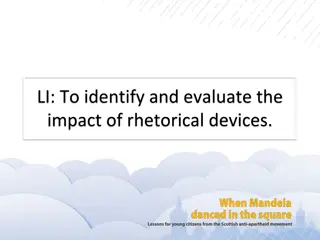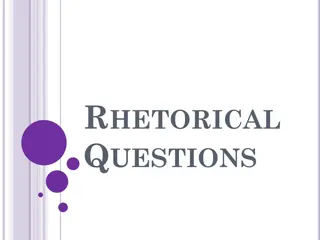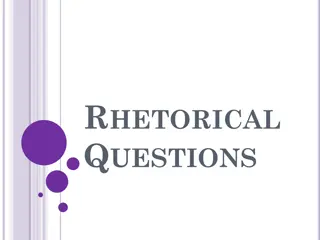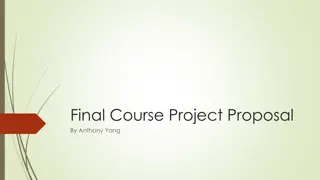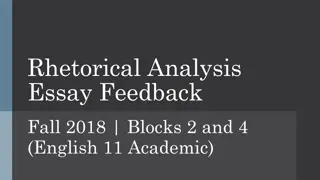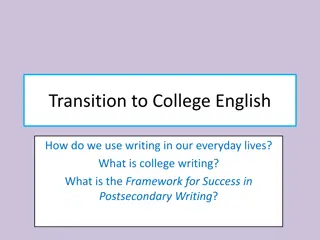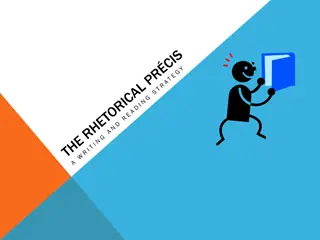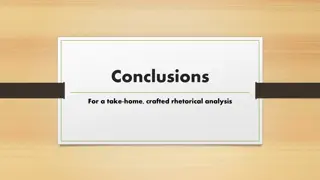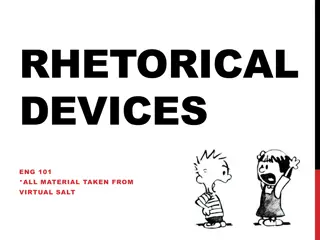Guide to Rhetorical Passage Analysis
Learn the essential steps for writing a rhetorical passage analysis, from selecting a significant text passage to analyzing the speaker, occasion, purpose, audience, and supporting rhetorical strategies. Illustrative examples from "The Boys in the Boat" demonstrate how to apply these steps effectively for a comprehensive analysis of literary works.
Download Presentation

Please find below an Image/Link to download the presentation.
The content on the website is provided AS IS for your information and personal use only. It may not be sold, licensed, or shared on other websites without obtaining consent from the author.If you encounter any issues during the download, it is possible that the publisher has removed the file from their server.
You are allowed to download the files provided on this website for personal or commercial use, subject to the condition that they are used lawfully. All files are the property of their respective owners.
The content on the website is provided AS IS for your information and personal use only. It may not be sold, licensed, or shared on other websites without obtaining consent from the author.
E N D
Presentation Transcript
Rhetorical Passage Analysis Steps
Premise The following are steps to guide you in writing a rhetorical passage analysis. The first slides demonstrate the claim sentences these provide the overall details of the book and author s purpose. The support slides aid you in analyzing the specific passage you have chosen. Remember that you can analyze diction, syntax, imagery, anaphora, asyndeton, rhetorical question, chiasmus, etc., etc., etc. The goal is to demonstrate your close reading analysis and relate your observations to the author s purpose.
Step 1 Copy a passage from your text that is of significance to you. You should handwrite the passage in your journal. Copy it EXACTLY as it appears in the text.
Step 2 Claim Underneath the passage you copied, analyze the passage in the following ways: FORMAT: 1. Speaker, Occasion, and Subject (Writer s credentials), (writer s first and last name), in his/her (type of text), (title of text), (strong verb see list at end of this handout) (writer s subject). 2. Purpose: (Writer s last name) s purpose is to (what the writer does in the text). 3. Audience: He/she adopts a[n] (adjective describing the attitude/feeling conveyed by the writer) tone in order to (verb phrase describing what the writer wants readers to do/think) in his/her (intended audience).
Step 2 - Claim 1. Speaker, Occasion, and Subject (Writer s credentials), (writer s first and last name), in his/her (type of text), (title of text), (strong verb see list at end of this handout) (writer s subject). 2. Purpose: (Writer s last name) s purpose is to (what the writer does in the text). 3. Audience: He/she adopts a[n] (adjective describing the attitude/feeling conveyed by the writer) tone in order to (verb phrase describing what the writer wants readers (intended audience). In Daniel James Brown s narrative text The Boys in the Boat, he relates the inspirational story of Joe Rantz and Rantz s UW teammates as they impossibly defeat the Germans in the 1936 Olympics crew race. Brown s purpose is to convey the hope, determination, and comradery of Joe and his crewmates and celebrate their achievements. He adopts an uplifting tone to appeal to readers sense of curiosity about this untold story and bring out readers sentiment and national pride. to do/think) in his/her
Step 3 - Support FORMAT and EXAMPLE 1. The first sentence identifies which section of the text you are discussing and the main idea of that section.(Writer s last name) (transition word) his/her (type of text) by (strong verb) that (main idea of this section of the text). 2. The second sentence conveys the writer s support for the main idea by identifying and providing a specific example for one rhetorical strategy used by the writer. [This sentence is repeated if you want to discuss more than one rhetorical strategy.] 3. The third sentence explains how the rhetorical strategies you discussed in the previous sentences help the writer achieve his purpose by using an in order to statement. 4. The fourth sentence identifies the effect of the writer s use of these rhetorical strategies on the audience.
Step 3 - Support In the section titled Resiliency and chapter seven of the narrative, Brown recounts the historical moment when then President FDR speaks to Washingtonians about plans for the Grand Coulee Dam. In the last paragraph, Brown states, Many would never forget the day. For them, it was a dawning, the first real hint of hope (122). Brown begins this momentous recollection with a simple sentence and follows with a complex, compound sentence and fragments. This juxtaposition of sentence types heightens the hopefulness Brown hopes to demonstrate rising in the spectators that day and the readers in that moment. The feeling of hope is essential for Brown to recreate for his readers in order to appeal to their wonder about the historical events and also incite the beginnings of what eventually turns to pride in the novel. His audience is moved in the same way as the patrons of the day, bringing them together through the decades. Audience Context My Topic (device) Analysis Effect on
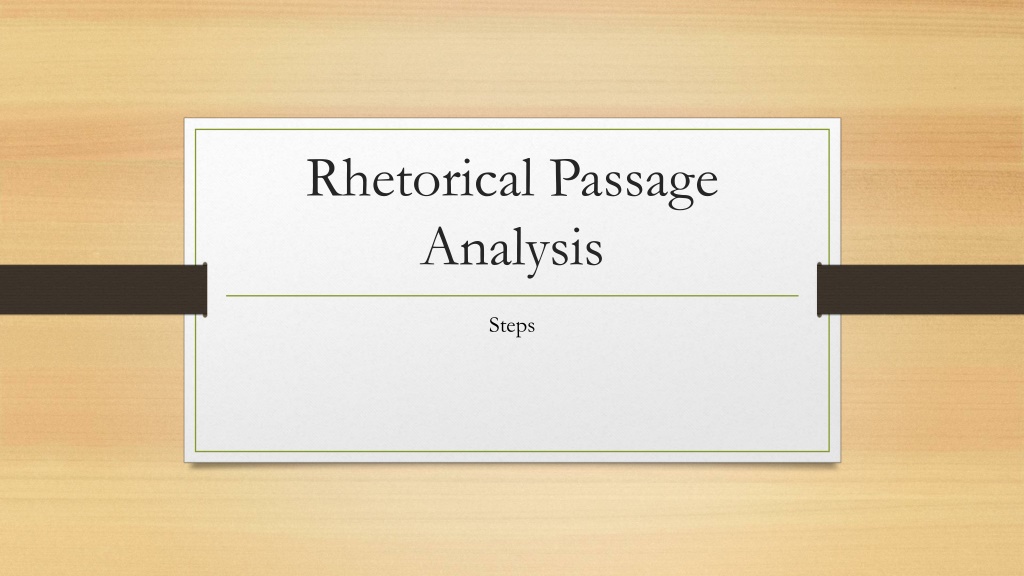
 undefined
undefined





